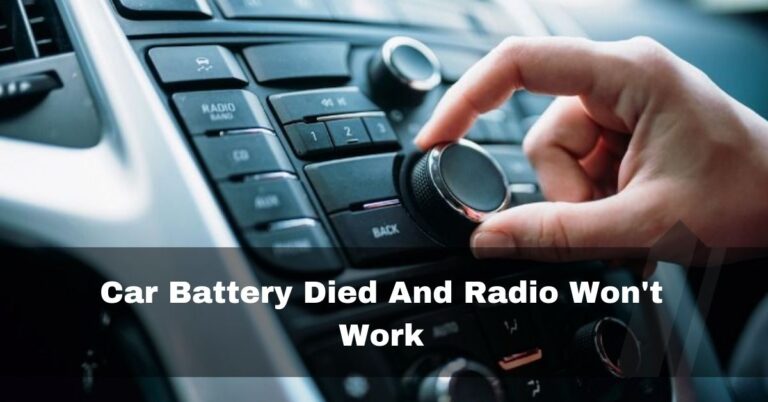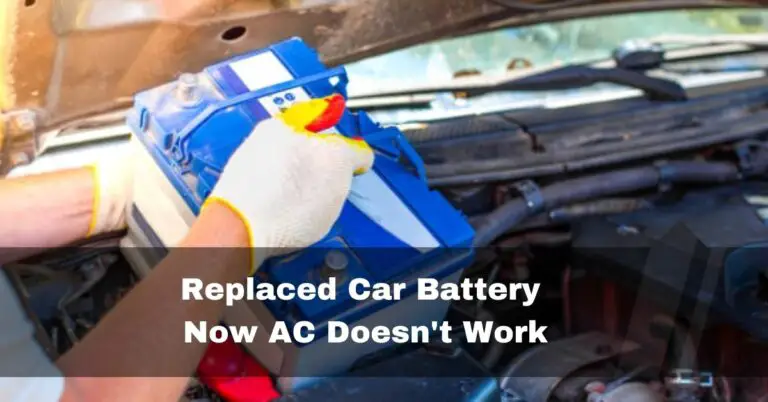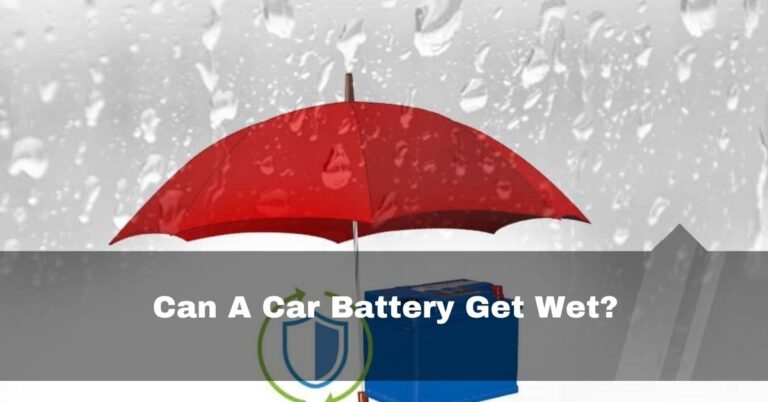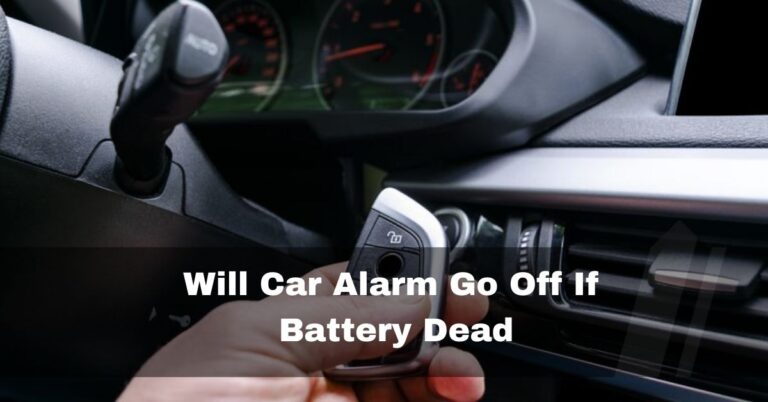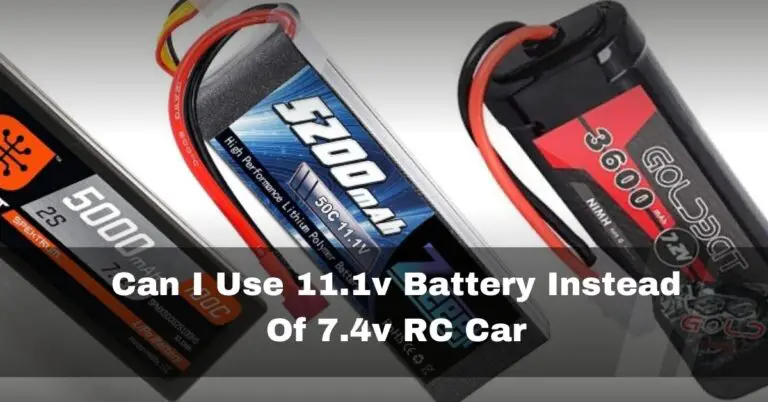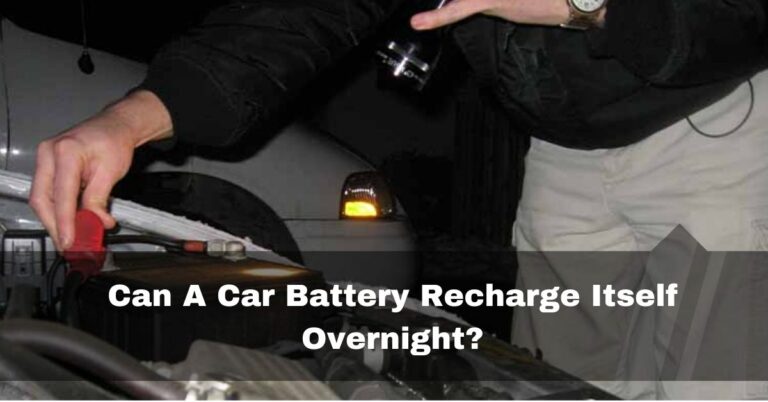Battery Light Going Off At 3000 RPM – Must Read it In 2024
Lately, I faced a puzzling situation with my car – a warning light that would turn on and off unexpectedly. The tricky part was that the car battery light had a peculiar habit of disappearing when the engine revved up to about 3000 RPM.
Battery Light Going Off At 3000 RPM (Short Answer)
If your battery is healthy, this suggests that your alternator is not charging at the lower RPM as it should. As a result, you should look for loose belts that might be slipping or determine whether the alternator needs to be repaired or replaced.
Having recently faced this scenario, I am eager to share my journey of unravelling the mysteries behind the unstable car battery light.
Table of Contents
Why My Car Battery Light Going Off at 3000 RPM?
To make sense of this quirky behavior, I researched and discovered a few possible reasons.
1. Insufficient Charging At Low RPM:
After some investigation, it turns out inadequate charging was the culprit. Inadequate charging is one potential cause of the battery light coming on at low RPM. The alternator may not turn quickly enough to produce enough electricity when the engine is idling or at low RPMs. The battery light, therefore, illuminates, signaling that the battery isn’t getting the proper charge.

Also Read: What RPM To Charge Car Battery
2. Faulty Voltage Regulator:
Charging system car battery warning light? The voltage regulator is in charge of controlling the alternator’s electrical output. If it breaks down, the charging process may be hampered, and the battery light may come on. The voltage regulator may stabilize and enable the charging system to operate properly at higher RPMs, turning off the LED.
3. Loose Or Worn-out Alternator Belt:
The engine’s crankshaft pulley is connected to the alternator via the alternator belt, which transmits mechanical energy to produce electricity. The alternator may slip or revolve inefficiently at low RPMs if the belt is loose or worn out, which results in inadequate charge.

The alternator performs better, and the indicator turns off when the engine revs up to 3000 RPM, and the belt tension rises.
4. Faulty Battery Or Battery Connections:
A weak or defective battery may have trouble maintaining a charge, which causes the battery light to come on at lower engine speeds. Insufficient charging can also occur due to loose or corroded battery connections that block current flow.
The alternator’s greater electrical output might circumvent these restrictions at higher RPMs, resulting in a brief light outage.
Also Read: How To Fix Reverse Polarity On A Car Battery
5. Malfunctioning Ignition Switch:
The ignition switch is essential to turn on a car’s electrical systems. The connection between the battery and the charging system may occasionally be disrupted if the ignition switch is broken or worn out. As a result, the battery light can illuminate at low RPMs but switch off at higher RPMs.

6. Wiring Issues:
Electrical flow variations in the charging system might be brought on by faulty or damaged wiring. These wiring faults may cause insufficient charging at low RPMs and turn on the battery light.
However, as the motor revs up to 3000 RPM, the greater voltage output may compensate for the wiring issues, briefly turning the light off.
7. Engine Control Unit (ECU) Malfunction:
The charging system is one of the many engine functions that the ECU, generally referred to as the engine control module, is in charge of controlling.

If an ECU failure or software error interferes with the charging process, the battery light may come on. The ECU may try to calibrate itself again or stabilize at higher RPMs, which could cause the LED to turn off briefly.
Also Read: Car Battery Clicking While Charging
How To Fix Car Battery Light Going Off at 3000 RPM?
Having recently dealt with the peculiar issue of my car battery light going off at 3000 RPM, I discovered a few steps to address and potentially fix this problem:
1. Check And Replace The Alternator Belt:
Check the alternator belt for evidence of sliding, slipping, or wear. It is advised to replace it if it seems loose or worn. A new belt with the right tension at varying engine speeds will provide effective power transfer and constant charging.

Also Read: Why Is My Car Battery Showing 15 Volts
2. Test And Replace The Voltage Regulator:
It is advised to have the voltage regulator checked out by a qualified mechanic if it is thought to be defective. They can use specialized equipment to gauge its function and determine whether it needs to be replaced.
A broken voltage regulator should be replaced immediately to restore normal charging and stop further electrical problems.
3. Professional Diagnosis And Repair:
It is advised to seek the advice of a trained mechanic if the fixes mentioned above are ineffective. The charging system, alternator, voltage regulator, and other relevant components can all be thoroughly inspected by them.

Their diagnostic equipment and expertise will help identify the precise source of the issue and offer the necessary fixes or replacements.
Also Read: How Long Does It Take To Charge A Car Battery At 6 Amps
4. Faulty Battery Or Battery Connections:
Have the battery evaluated to see how it is doing and how much power it has. The battery may need to be replaced if it is weak or defective. On the other hand, Look for rust or looseness in the battery terminals. Ensure the terminals are clean and tightly torqued for a strong electrical connection.
5. Check Malfunctioning Of the Ignition Switch:
If you think your ignition switch might be broken, get it properly tested and diagnosed by a mechanic. The ignition switch may need to be replaced to resolve the problem if it is determined to be defective.

6. Inspect Wiring Issues:
Carefully look for any indications of damage, fraying, or loose connections in the cabling that makes up the charging system. Any damaged wire should be fixed or replaced to ensure proper electrical flow.
Also Read: Car Dies When Removing Positive Battery Cable
7. Engine Control Unit (ECU) Malfunction:
A professional diagnosis using specialist diagnostic equipment is required for an ECU issue. Consult a competent mechanic to thoroughly analyze the ECU and associated systems and find any software bugs or problems. The ECU may need to be reprogrammed or changed if necessary.

alternator not charging at low rpm:
If your alternator is not charging at low RPM, it could be due to several reasons:
- Faulty Voltage Regulator: The voltage regulator is responsible for controlling the output of the alternator. If malfunctioning, the alternator may not provide sufficient charge at low RPM.
- Worn-out Alternator Belt: A loose or worn-out alternator belt may slip, reducing the alternator’s ability to generate power, especially at low engine speeds.
- Failing Alternator: An aging or faulty alternator may struggle to produce a consistent charge, mainly when the engine runs at low RPM.
- Electrical System Issues: Problems within the electrical system, such as damaged wiring or poor connections, can hinder the alternator’s performance at low RPM.
Also Read: How Far Can A Car Drive On Battery Only
car battery light on and off:
If the car battery light comes on and off or remains lit during your drive, it suggests potential issues with your battery or the charging system. The illuminated battery light on your dashboard might point to a minor concern, such as built-up corrosion on the battery terminals, or it could indicate a more intricate problem, such as a failing alternator.
Battery light goes on at 3000 rpm:
It’s likely a faulty alternator if the issue consistently occurs at higher RPMs. To confirm, check the battery voltage after the engine surpasses 3000 RPM. A properly functioning alternator should read between 13-14.5 volts.
The voltage will likely register below 12.6 volts if the alternator is defective. Based on my own experiences, this diagnostic step can help pinpoint whether the alternator is the root cause of the problem.
related Questions:
1. Why does my battery light go off when I accelerate?
When you accelerate, the alternator kicks into high gear, providing more energy to the battery and causing the light to turn off. Other potential causes could be a faulty voltage regulator, a slipping belt, or issues with the alternator.
2. Why does my battery light go off at high RPM?
Think of it like an “alternator light.” As you rev up the engine, the alternator spins faster, enabling it to charge the battery more effectively and turn off the light.
3. Why does my battery light come on at low speeds?
If the battery light illuminates at low speeds, the alternator struggles to charge the battery. The likely culprit is a malfunctioning voltage regulator within the alternator, suggesting a need for replacement.
4. Can a bad serpentine belt cause the battery light to come on?
Absolutely. If the serpentine belt is loose, exhibits excessive movement, or shows signs of damage, such as cracks or fraying, it can disrupt the proper functioning of the alternator. A broken serpentine belt, in particular, can trigger the battery light to illuminate due to the alternator malfunctioning.
5. Why Does My Battery Light Flicker At High Rpms?
Instead of low rpm, the alternator’s high rotational speed would force the brushes to float. As a result, the light would be on at high rpm and off at low rpm since the floating prevents the alternator from charging.
6. How Do You Diagnose A Bad Alternator Regulator?
Flickering, dimming, or pulsing lights are the most frequent signs of a faulty regulator. More specifically, the car’s Headlights cycle between dazzling and dim without your help. The high beam isn’t working correctly.
7. Why Is My Battery Light On And Off While Driving?
When the battery warning light illuminates while you’re driving, the alternator is no longer charging the battery; instead, it is now operating solely on its power. It implies that your automobile is only powered by a battery, which will ultimately drain and cause it to stop.
8. When should battery light go off?
The battery light in your car should typically go off shortly after starting the engine. It’s normal for the light to illuminate briefly during the startup process as part of the system check. However, it should extinguish shortly after, indicating that the charging system is functioning correctly.
9. Why does my battery light come on at low speeds?
The battery light illuminates at low speeds, indicating that the alternator struggles to charge the battery during low RPM. The issue is likely related to a worn-out voltage regulator in the alternator, suggesting that a replacement may be necessary.
10. Does RPM affect alternator charge?
Yes, the alternator’s charging voltage may not be sufficient until its speed surpasses about 2000 RPM. Although designed for total output at 6000 RPM, it can continue spinning at even higher speeds without increasing output.
Conclusion:
In my recent troubleshooting journey, I’ve realized that examining the charging system and related components is the key to unravelling the mystery behind the car battery light coming on at 3000 RPM. It’s akin to solving a puzzle where inadequate charging at low RPMs, a finicky voltage regulator, or a worn-out alternator belt might be the culprits. Sharing this firsthand experience, I’ve learned that addressing these potential issues can make a significant difference. You can resolve this by addressing these probable reasons with remedies such as belt replacement, voltage regulator testing/replacement, or seeking professional diagnostics.
Also Read:
- Car Battery Reads 13 Volts But Won’t Start
- Car Battery Smoking When Jumping
- Does Car Battery Affect Air Conditioning
- Car Battery Voltage Low When Running
References:
- http://forums.pelicanparts.com/porsche-924-944-968-technical-forum/506199-alternator-not-charging-low-rpm.html
- https://www.preludepower.com/threads/battery-light-comes-on-below-3000-rpm.232244/
- https://www.justanswer.com/ford/10t6d-battery-light-coming-gauges-going-crazy-3000-rpm.html
- https://www.tiresplus.com/blog/batteries/battery-light-flashing-intermittently/
- https://www.quora.com/Why-is-my-battery-light-on-but-when-I-accelerate-it-goes-off-I-just-put-a-used-newer-battery-in

